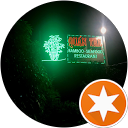Tran Temple Complex (Đền Trần) Nam Dinh: History, Festivals, and Essential Travel Guide
The Tran Temple Complex (Vietnamese: Đền Trần) in Nam Dinh is more than just a place of worship; it stands as a profound symbol of Vietnamese history and national pride. Located in the ancestral homeland of the great Tran Dynasty (1225-1400), this sacred site honors the 14 Tran kings and other meritorious individuals who shaped the country. Most notably, the Tran monarchs led the Dai Viet people to three decisive victories against the formidable Mongol invaders in the 13th century. Therefore, a visit here directly connects you with one of Vietnam’s most glorious historical eras.
A Glimpse into the Past: History and Architecture
Historically, the complex occupies the former site of Thien Truong Palace (Thien Truong Co Cung), which functioned as the second capital of Dai Viet after Thang Long (Hanoi). The original structures were destroyed in the 15th century by Ming forces. Consequently, the temples you see today were rebuilt, primarily starting in the late 17th century.
The complex includes three major temples of similar scale, facing the main gate and a rectangular lake:
Thien Truong Temple (Đền Thiên Trường): Positioned centrally, this temple is dedicated to the 14 emperors of the Tran Dynasty and their empresses.
Co Trach Temple (Đền Cố Trạch): Situated to the east, this temple honors the revered national hero, Commander Tran Hung Dao (Trần Hưng Đạo), alongside his family and loyal generals.
Trung Hoa Temple (Đền Trùng Hoa): Located to the west, this newer temple (rebuilt in 2000) features 14 meticulously cast bronze statues representing the Tran kings.
Active verbs dominate the architecture: the temples showcase classic Vietnamese design, employing elaborate carvings, vibrant details, and expansive courtyards. Indeed, architecture enthusiasts recognize the masterful blend of spiritual and historical preservation evident in the structure.

Cultural Highlights: The Vibrant Festivals
Travelers frequently seek information about the major festivals that bring the complex to life. You should plan your visit around these events if you desire a truly immersive cultural experience.
The Royal Seal Opening Ceremony (Lễ Khai Ấn Đền Trần): Held on the 15th day of the first lunar month (in early spring), this is the most famous event. The ritual revives the tradition where the king granted a seal to promote a prosperous new year. Consequently, thousands of visitors queue overnight, eagerly waiting to receive a stamped “blessed seal” (An) for luck and career success.
The Tran Temple Festival (Hội Đền Trần): Celebrated from the 15th to the 20th day of the eighth lunar month, this festival commemorates the death anniversary of Tran Hung Dao. Moreover, the five-day event features vibrant cultural activities, including traditional wrestling, folk singing, and a solemn water procession (Lễ Rước Nước).
Essential Visitor Information
Make your visit seamless by utilizing the following practical details. People appreciate knowing the operational aspects of a heritage site.
Address: Trần Thừa, Lộc Vượng, Nam Định, Vietnam. (The complex is easily accessible near National Highway 10).
Entrance Fee: The Tran Temple Complex maintains a policy of free entry for all visitors. You do not need to purchase an admission ticket.
Parking Fee: If you arrive by personal vehicle (motorcycle or car), you will pay a small parking fee, typically between 10,000 to 20,000 VND.
Operating Hours: The complex generally welcomes visitors from early morning until late afternoon, though hours fluctuate during major festivals.
Contact Information: For official inquiries regarding management or large group visits, contact the local authorities. The phone number often associated with the complex’s management is 0228.3866664.

Important Travel Advice for Visitors
Dress Code: Visitors must respect the religious nature of the site. Therefore, ensure you wear modest clothing that covers your shoulders and knees.
Best Time to Visit: To fully appreciate the architecture and peaceful atmosphere, visit on a weekday outside the Lunar New Year or August festival months. However, if you want to experience the local culture at its most energetic, deliberately visit during one of the major festivals, but prepare for immense crowds.
Photography: You may photograph the exterior and general grounds, but be mindful and respectful of inner altars and active worshipers.




